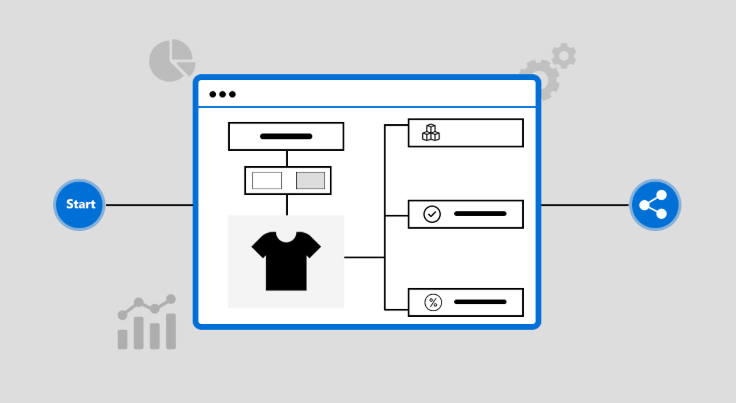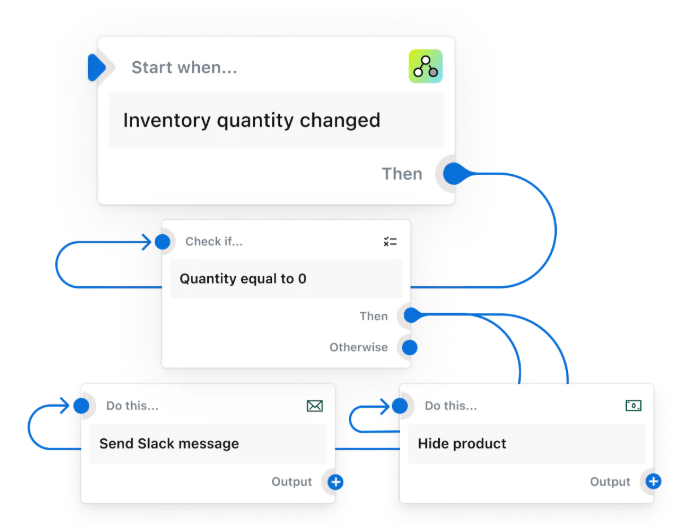
Start a free trial and enjoy 3 months of Shopify for 1 $/month on select plans. Sign up now

Running an eCommerce store can feel like juggling a dozen tasks at once—processing orders, updating inventory, sending customer emails, and managing marketing campaigns. For Shopify merchants, automation has become a secret weapon to keep everything running smoothly without adding extra hours to the workday.
Shopify Flow, a powerful automation tool, helps merchants save time, reduce errors, and deliver better customer experiences. By setting up the right flows, you can free yourself from repetitive tasks and focus on growth.
In this guide, we’ll explore the key Shopify Flow automations every merchant should set up to make their business smarter, faster, and more efficient.

Before diving into specific automations, it’s important to understand what Shopify Flow actually is. Shopify Flow is an automation platform built into Shopify (and originally exclusive to Shopify Plus merchants) that allows you to create workflows without needing any coding knowledge. It’s designed around three building blocks: triggers, conditions, and actions.
This logic makes it easy to automate tasks across orders, inventory, customers, and more. What once required constant human oversight can now happen instantly, behind the scenes. The benefit isn’t just time savings—it’s consistency. Automations don’t forget, skip steps, or make mistakes the way humans sometimes do. That reliability builds trust with customers and keeps operations running smoothly.
Order management is one of the most time-consuming parts of running a store. From flagging suspicious transactions to keeping fulfillment organized, many tasks can be automated with Shopify Flow. This not only reduces manual labor but also helps protect your business from risk.
For example, merchants can set up flows to:
Imagine you run a store that frequently ships internationally. Without automation, your team might miss a high-value international order buried among smaller ones. With Shopify Flow, that order could be instantly flagged and sent to a manager for review, ensuring nothing slips through the cracks. Over time, this reduces fulfillment errors and builds a reputation for reliability.
Customers want to feel valued, and personalizing their journey can make the difference between a one-time purchase and long-term loyalty. Shopify Flow gives merchants the tools to tailor experiences without spending hours manually segmenting customers.
Here’s how Flow helps with customer engagement:
These automations ensure that customers don’t get lost in the shuffle. Every shopper receives relevant treatment based on their behavior. For example, a customer who has placed five orders deserves different communication than someone making their first purchase. Flow makes that distinction automatic, scaling personalization without the manual effort.

Inventory is the backbone of any eCommerce business, and mistakes here can be costly. Overselling products, failing to restock on time, or leaving out-of-stock items visible can frustrate customers and hurt sales. Shopify Flow can act as a watchdog for your inventory, automating routine but critical tasks.
Some key automations include:
Picture this: you sell skincare products, and one of your bestsellers is running out. Instead of discovering the shortage too late, Flow alerts your purchasing team the moment stock drops below 20 units. They reorder immediately, preventing lost sales. This type of automation doesn’t just save time—it preserves revenue and customer satisfaction.
Marketing is essential for growth, but it can also be repetitive. Flow integrations with apps like Klaviyo or Shopify Email allow merchants to build smarter campaigns triggered by customer behavior. This reduces wasted effort and ensures customers receive messages that are timely and relevant.
Practical automations include:
Consider a clothing store. A customer who buys jeans could automatically be targeted later with promotions on belts or jackets. Instead of sending generic campaigns, Flow ensures the right message reaches the right shopper. Over time, this boosts conversions and customer lifetime value without overwhelming your marketing team.
Fraudulent orders are a nightmare for merchants. Chargebacks, lost products, and wasted shipping costs can quickly add up. Shopify Flow helps reduce these risks by automating fraud checks and escalation processes.
For example:
Fraud prevention automations don’t just save money—they protect your brand. Customers expect their shopping experiences to be safe. By stopping fraudulent transactions early, you maintain credibility and avoid the messy disputes that come with chargebacks.
Shopify Flow isn’t just another tool in your eCommerce toolkit—it’s the engine that can streamline operations, strengthen customer relationships, and safeguard your business from risks. By setting up automations for order management, customer engagement, inventory control, marketing, and fraud prevention, you can eliminate countless repetitive tasks and focus your energy where it matters most: growing your business.
The beauty of Flow lies in its flexibility. You don’t need to automate everything at once—start with a few key workflows, measure their impact, and build from there. Over time, these small efficiencies compound, saving hours each week and giving customers a more consistent, reliable experience. In the competitive world of eCommerce, automation isn’t just a convenience—it’s a necessity. With Shopify Flow, every merchant has the power to work smarter, scale faster, and create a store that runs like clockwork.